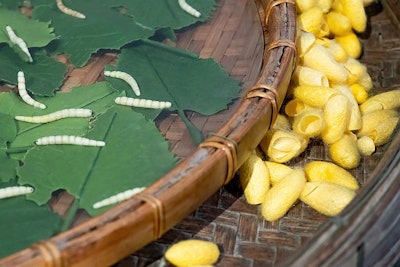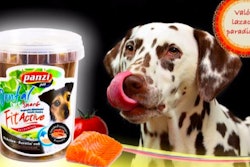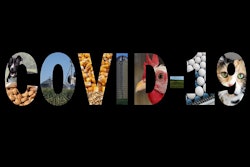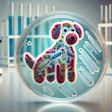
More than four thousand years ago, a Chinese empress may have discovered silk after a moth's cocoon fell from a mulberry tree into her tea and unraveled into fine, shimmering threads. After that legendary chance discovery, silkworms (Bombyx mori) and their cocoons were a closely guarded trade secret of imperial China. Revealing the true source of silk may have been punishable by death in ancient times. While China no longer maintains a monopoly on production, silk remains a luxurious, expensive fabric. The insects that produce the silk also have economic value as human food, especially in East Asia. Likewise, silkworms may become a novel protein for the pet food industry as insect-based ingredients become more popular globally.
Silkworm cat food developed
In Taiwan, an agricultural research station developed a means to use silkworm in cat food, Taipei Times reported. Researchers at the Miaoli District Agricultural Research and Extension Station developed a means to process silkworm pupae after the cocoons were harvested for silk production. Some cat owners who tried the canned pet food reported cat their cat’s feces produced less odor than when fed their conventional diets and that the cat’s fur became more luxuriant. The director of the research station noted that silkworm pupae contain natural antimicrobial chemicals, along with protein, fats, carbohydrates, chitin and omega-3 fatty acids. The technology developed at the research station was transferred to a biotechnology company for mass production.
Research on silkworms in dog food
Silkworms show promise as dog food ingredients as well. Scientists in Thailand fed dogs a diet containing silkworm, house crickets or a control diet with poultry meal. The journal Animals published their research. A group of 29 adult Beagles were divided into five groups. Each group received either the control diet or dog food with 10% cricket, 20% cricket, 7% silkworm or with 14% silkworm. The silkworms and crickets were ground into a powder and used to replace a portion of the poultry meal used in dog food formulations. The researchers analyzed the insect meals along with measuring digestibility and other factors in the dogs.
In 100-gram samples, house cricket dry matter contained 54.4 grams crude protein, 16.7 grams crude fat, 8.53 grams crude fiber and 5.82 grams ash. The same quantity of silkworm dry matter contained 43.8 grams crude protein, 30.1 grams crude fat, 3.24 grams crude fiber and 4.30 grams ash.
Among dogs fed one of the three diets, the researchers didn’t observe any statistically significant differences in body weight, body condition score, feed intake, fecal output, fecal score and fecal moisture, or apparent total tract digestibility of dry matter, organic matter, crude protein and crude fat. The researchers concluded that both crickets and silkworms held potential as novel, insect-based pet food ingredients. However, they did caution that long-term feeding trials should be conducted to look for particular hypersensitivity disorders to the insects.


















